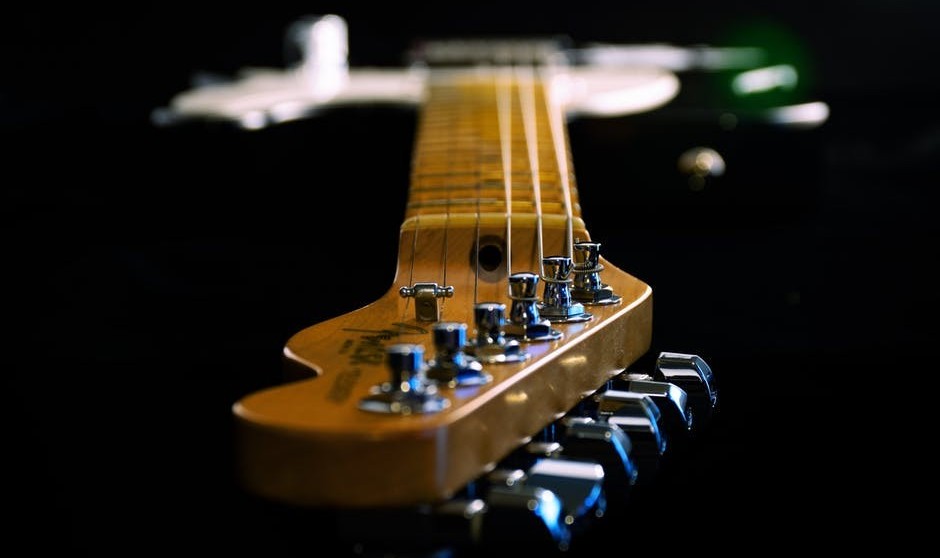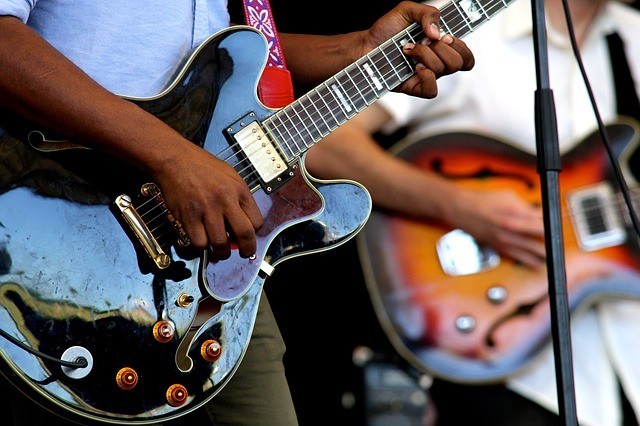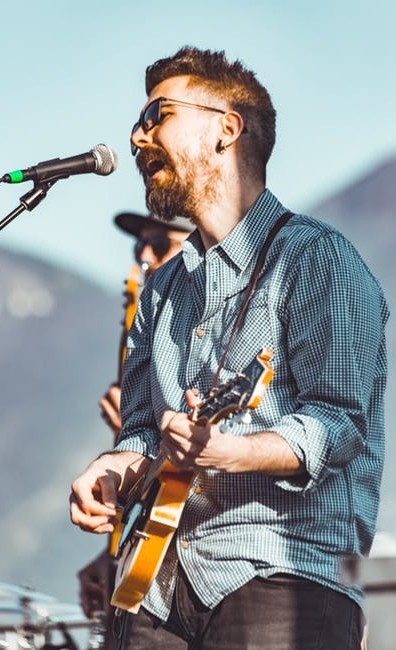
Ever heard a Best Man or Maid of Honor give a speech wedding reception and think, “Wow – they’re really eloquent!”?
Or maybe you’ve visited the other side of the tracks, where somebody got up to speak and it was little more than an embarrassment or a parody of what a speech should be!
Either way, it shows you something: being able to communicate effectively is memorable, riveting and emotionally impactful in some, or all, ways.
To learn how to solo on guitar, you must first acknowledge that there are specific things that contribute to a guitar player being “good” at what they do.
And they aren’t guarded voodoo secrets either – it’s pretty easy to find out what things you need to do to be a superstar shredder.
The hard part is… DOING THEM!!

In this :Part One” of soloing techniques, I’m going to showcase and explain five different techniques that are always present in any memorable axe-slinger.
In subsequent articles, I’ll also write about many more, until I’ve shared with you the whole list that I’ve compiled over my 27+ years of teaching music.
For now, though… grab your axe, a pick, and let’s get playin’!
1) It’s Golden
So, ya ever notice how some people… just never shut up?!
It’s annoying, right?

In the same way, if you play and play and play… and keep playing, without a break, a pause, or a rest…
… THAT’S ALSO ANNOYING!
It’ll probably will be cool at first, but after a few minutes of your nonstop barrage of sound (some might even say ‘noise’!), people are going to tune out. We quickly get our fill of the same thing over and over again.
Just like Brian Regan’s “Me Monster”.
“What’s that?”, you ask? Well, lemme show you….
See what I mean? Who needs that kind of monotony!
Hope you enjoyed that Brian Regan clip as much as I always do. That guy always leaves me breathless – I can’t even pick my guitar up, I’m laughing so hard!
I showed you that to remind you of what NOT to do as you approach guitar soloing. It IS a lot like talking… just with your FINGERS, not your lips!
So don’t play like a machine gun. Don’t shoot with endless rounds – take breaks. Deliberately insert pauses. Let’s silence also speak.
I’ve done a lot of acting in my life too, and I can tell you… what makes a speech sound dramatic and impactful is where you put pauses.
2) Sloth or Cheetah??

The next thing to monitor your soloing for is whether or not you are varying the LENGTH of your notes, or their SPEED.
Just like when someone never shuts up, if you are always using the same kinds of notes, say, 16th notes, your music will quickly become, well… boring. You’ve GOT to mix it up a bit.
Consider these classic guitar solos:
- “All Along the Watchtower” – Jimi Hendrix
- “More Than A Feeling” – Boston
- “Overkill” – Men at Work
- “Comfortably Numb” – Pink Floyd
In each of these masterpieces, you not only find killer chops and tonal choices – you’ll also notice a great variety of note lengths. Sometimes they’re playing fast notes; sometimes slow ones.
Imagine the parade of yawns you’d create if you only used whole notes in your solos. Ugh. Awful.
Or, taking the opposite tack, consider how lost and uninterested your audience might become if you constantly barraged us with 32nd notes all the time with no consideration for a little sustain.
Now, certain genres call for more or less of each. If you play in a speed metal band, then, yeah… you’re going to have to play fast. A LOT!

But for the majority of music genres, the more variety you put in your note lengths, the more interesting and attractive your playing will be.
My good friend Sean Barrett, who sometimes writes for us here at Seriousgas.com, has a favorite guitarist (who shall remain nameless) that tends to play fast notes all the time.
I told Sean how I never wanted to listen to this artist because all I ever heard was machine gun delivery of notes over and over again. For me at least, that kind of approach is melodically uninteresting and unsatisfying.
Sean referred me to a couple songs where this artist finally slowed things down a bit here and there, and I actually found I could appreciate his playing and his style a lot more.
So cast a casual critical eye to your solo playing, and ask this question:
Am I mixing it up with slow and fast notes to express myself musically? Or am I the jerk in the fast lane he wants to tailgate everybody?! LoL
Yin and yang, people! Light and dark. Fear and calm. Love and hate.
Slow, and fast.
It’s what will make your playing, and thus YOU, mesmerizing and captivating in the long run.
3) How Was That Again??
“You’re gonna be a great guitarist!”

“You’re gonna be a great guitarist!”
Did you notice how much more meaningful and cool that felt, when I repeated that statement?!

If something’s important, or exceptional, it deserves to be heard again. A second time!
Ever heard a song once on the radio and afterwards we’re able to sing it nonetheless? I guarantee you that song had a healthy dose of repetition in it!!
Here’s a few great songs that spring to mind that have obvious repetition in the guitar rhythm and/or solo sections:
- “Separate Ways” – Journey
- “Boys of Summer” – Don Henley
- “Sweet Child of Mine” – Guns ‘N’ Roses
- “Smells Like Teen Spirit” – NIrvana
If you don’t know any of those songs well enough to hear the guitar parts in your head, go listen to ’em. You’ll find LOTS of repetition, and that’s partly why the song stick in your head so much.
EARWORM ALERT!! LoL
Now if you’re playing jazz, especially Free Jazz, then you get a pass card. We know what you like: melodic and harmonic exploration… non-stop! I get it. That’s part of what makes jazz… jazz.
(That’s also the reason, by the way, that the majority of people do NOT listen to Jazz. My wife is among them. She can’t stand it. She says it just sounds like musical chaos!)

Despite my wife’s inability to appreciate the nuances of some of the finest musicians alive today (sorry, honey!) even in jazz we find that at least the main melody of the tune, or the head phrase, will usually have a modicum of repetition. A note or two. Or three.
It all comes down to this: if you want your music to be accessible to the majority of people out there, you MUST put repetition in your phrasing.
It’s not hard to do either. Just make this little personal rule for yourself whenever you’re soloing: be looking and listening for exceptional phrases to repeat.
When you play something and think, “Wow! That sounds killer!”…
… PLAY IT A SECOND TIME!! Your audiences, and even your fellow musicians, will love it.

Now, I’m not saying run a phrase or lick into the ground, over and over and over and over and…
Just repeat it once. That’s all. Just once.
Chances are that little bit will do the trick.
And YOU’ll be fielding calls from people who want to hire you how to play guitar – for THEM! 😉
4) One of These Things… is Not Like the Other…

Teaching music students over three decades now, I’ve learned a thing or two.
One of those things is how to recognize when a student still doesn’t “get it”, and how to come up with a new and different way to say the same thing to help them understand.
This is a great technique to use in your soloing also. Whenever you play a tasty lick, or riff, or phrase… repeat it again, but with a slight variation.
Maybe it’s the last note you change. Or maybe you swap out the first one.
Instead of sliding into the note, like you just did, you can bend into it instead.
Did you trill two notes together quickly? Then choose two different notes to trill, but keep the length the same.

Or perhaps you play the exact same melody, but use the whammy bar to sprinkle in some quick bends, to bend up at the beginning of some notes, like Mike Rutherford from Genesis does a lot.
There are myriad ways to play any given phrase a little different. No choice you make will be wrong, so just go for it!
Here’s a few fantastic guitar solos that do just that!:
- “Something” – The Beatles
- “Sultans of Swing” – Dire Straits
- “Bohemian Rhapsody” – Queen
- “Layla” – Eric Clapton
Just add a new little, subtle spice to your best phrases, and voila… people will eat it up, I’m telling ya.
If you think of soloing like talking to your audience, it’s like saying the same thing, but with a twist… So they finally get it.
See? There’s a music teacher in you too! 😉
5) Finger Singers

Okay, now we come to my favorite way of guitar soloing.
Playing melodically!!
I even think that a guitar solo would always be melodic, but I’ve heard enough of them to tell you that, no, some solos are hardly melodic at all.
I come across this very “unsingable” approach to soloing on guitar mostly in music that’s all about “showing off”. You know what I’m talking about:
“How fast can I play?!”
“How many notes can I fit in 8 measures?!!”
“How many old, road-worn guitar licks can I throw into one solo section?!!”
If those are the questions you’re asking to try to create a good guitar solo, you’ll probably end up with something that sounds closer to a parody, rather than a masterpiece.
This is why most of the time, when I’m recording guitar solos in the studio, I rarely keep the first thing I play. Or the second. Or even the third!!
Instead, I play through the solo section 5 to 10… sometimes up to 20 times. Then I go back and listen to them all, looking for whatever passages just sound perfect within the vibe of the song.

Notice I didn’t say that I look for what “impresses” me the most. The most impressive players of any instrument (to me at least) are those that serve THE SONG, and most of the time songs don’t need 32nd notes to appropriately bring them to life.
Here’s the best way I can describe making this technique work for you: after you come up with any guitar solo…
… try to SING it.
Yep, you read that right. Even if you’re not a vocalist in any way, still try to sing what you just played.
Then ask yourself: was that easy to sing? Or difficult?
And here’s an even better test: put your instrument down, walk away, and 5 minutes later see if you can hear the melody in
If, in either of those two cases, you find it difficult to resurrect that solo in your head, or on your lips, then you might need to think a bit more melodically.
Here are some of my absolute favorite guitar solos of all time that are SO melodic I can sing them from beginning to end. We’re talkin classic awesomeness here!:
- “Panama” – Van Halen
- “Hotel California” – Eagles
- “Magic Man” – Heart
- “Goodbye Stranger” – Supertramp
- “Stairway to Heaven” – Led Zeppelin
- Pretty much any Tom Scholz solo from any “Boston” record!!

If you listened to all six of those bands, as I just did writing this article, you can indeed say that you have been schooled, baby, in the art of melodic guitar soloing. No doubt about it.
So don’t just think scales. Or positions. Or remembering riffs.
Instead, try singing with your fingers. Strive for memorable, catchy MELODIES. Approach those strings like Paul McCartney approaches his vocals.
You do that? Your chances of playing a “guitar-hero-worthy” solo just skyrocketed into “very, very likely” territory.
Meetcha there!! 😉
Bring the Spice!!

So those are the first five techniques that I teach my students regularly here in my recording studio when they want to know how to solo on guitar.
There are many others, and I’ll be writing about them soon enough, so keep checking in here at seriousgas.com for the next bodacious batches of solo bad-ass-ery!
But in the meantime how about sharing some of the soloing techniques that you like to use? Are they among the ones we went over today? Or were your favorites missing?? Let us know in the Comments section and strut your technique stuff!

As always, the more time you spend with something, the more familiar you become with it. So take these suggestions into your wood shed, see how they influence your playing, and deliberately start singing your spontaneous string songs with their scintillating spices!
The specific combination of techniques that YOU use is what will, over time, create your own personal style and approach to playing.
I mean, come on… if Gordo the Gorilla can do it, then… LoL
Which reminds me… I gotta practice that mixolydian scale now! 😉
If you’d like even more general info on how to play guitar well, start with THIS FIRST GUITAR LESSON POST and continue on in the series we’ve written for you. Otherwise…
… see you soon for Part 2!!!
Now, go… make… sounds!!
Teaj
